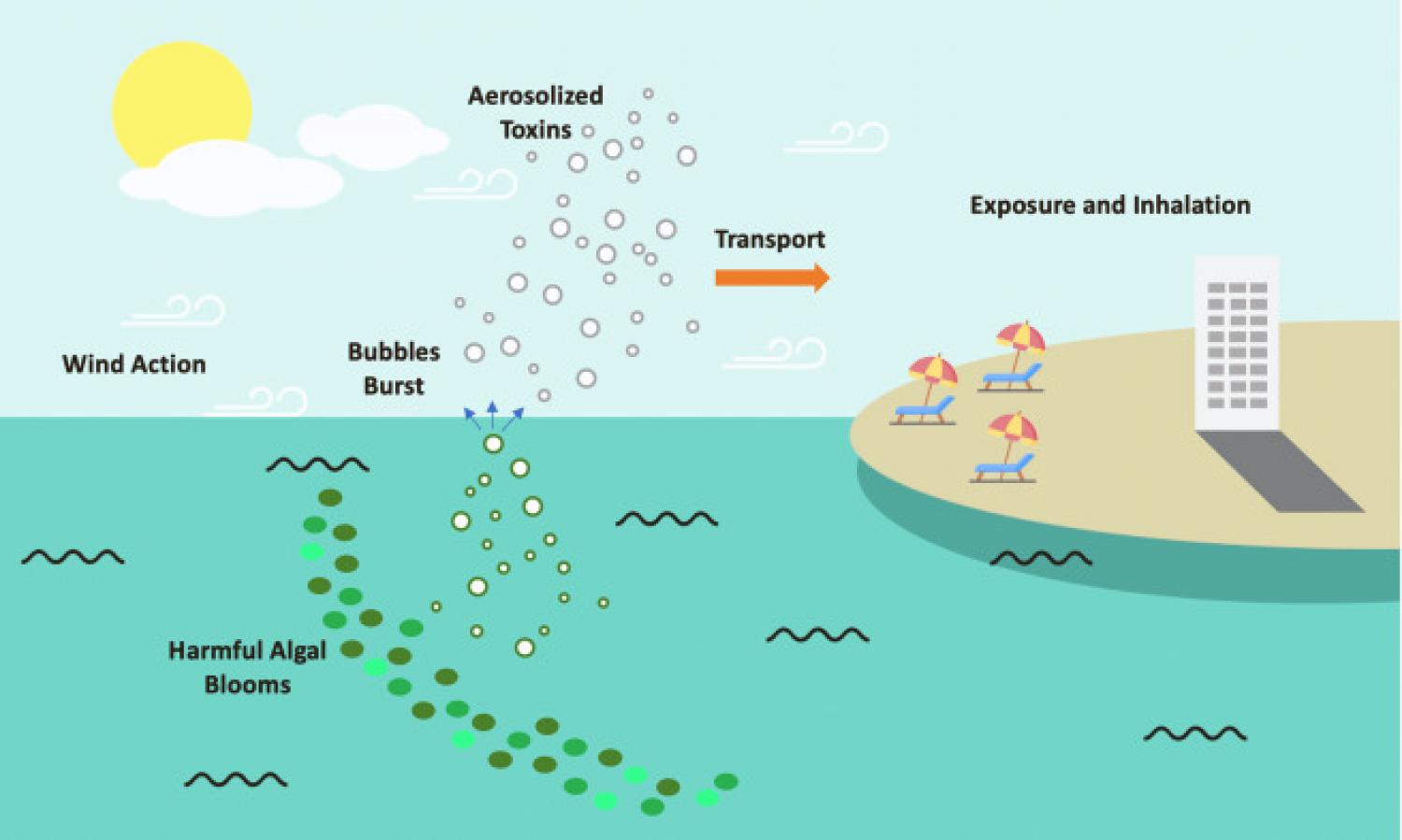
Harmful algal blooms (HABs) are increasing across many locations globally. Toxins from HABs can be incorporated into aerosols and transported inland, where subsequent exposure and inhalation can induce adverse health effects. However, the relationship between HAB aerosols and health outcomes remains unclear despite the potential for population-level exposures. In this review, we synthesized the current state of knowledge and identified evidence gaps in the relationship between HAB aerosols and human health. Aerosols from Karenia brevis, Ostreopsis sp., and cyanobacteria were linked with respiratory outcomes. However, most works did not directly measure aerosol or toxin concentrations and instead relied on proxy metrics of exposure, such as cell concentrations in nearby waterbodies. Furthermore, the number of studies with epidemiological designs was limited. Significant uncertainties remain regarding the health effects of other HAB species; threshold dose and the dose–response relationship; effects of concurrent exposures to mixtures of toxins and other aerosol sources, such as microplastics and metals; the impact of long-term exposures; and disparities in exposures and associated health effects across potentially vulnerable subpopulations. Additional studies employing multifaceted exposure assessment methods and leveraging large health databases could address such gaps and improve our understanding of the public health burden of HABs.
